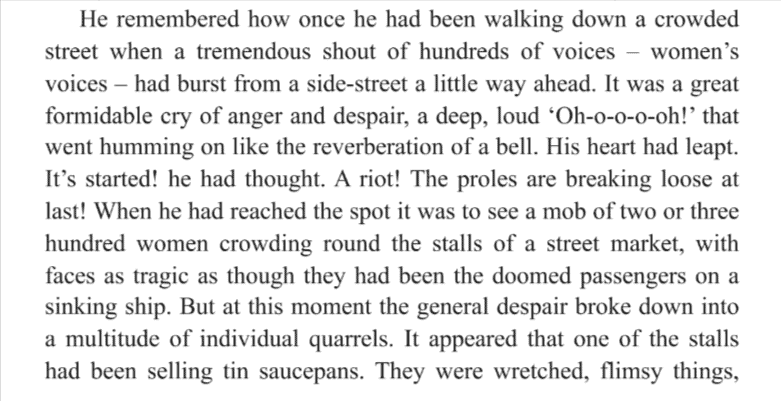The third-person-limited point of view is one of the most commonly used narrative POVs in modern literature.
If you’ve written before, there’s a high chance you’ve already used it instinctively without knowing the whole theory behind why and how it works.
Today, we’re here to demystify all of that! In this guide, you’ll learn:
- What is the third person point of view limited, and how does it differ from 3rd person POV omniscient and 1st person perspective?
- Some great examples of third-person POV in literature.
- How to write in the third person limited.
- And what mistakes to avoid!
What Is a Third-Person Limited POV?
Third-person limited point of view (POV) is a narrative style in which the story is told through the perspective of a single character at a time, using third-person pronouns such as “he,” “she,” or “they.” This perspective allows the narrator to convey the thoughts, feelings, and experiences of that character while remaining unaware of the internal states of other characters.
Just like with the first person point of view, we’re focusing on one character and their perspective, but unlike 1st person POV, the narrator is not the same as the character. This separation is a crucial differentiator between the two.

Benefits of 3rd Person Limited
So, why exactly is this POV so beloved by authors and readers?
Deep Emotional Connection to a Single Character
By focusing on a single character’s perspective, third-person limited allows for a deep dive into their thoughts, feelings, and motivations. Readers can empathize with the character’s experiences, triumphs, and struggles, which creates a strong emotional connection. This intimate perspective can make the story more poignant and memorable.
Balanced Perspective, Avoiding the Bias of First-Person
Unlike first-person, third-person limited offers a more balanced perspective. The narrator can observe and report on events objectively, avoiding the potential biases and limitations of a first-person narrator.
Increased Suspense by Limiting the Reader’s Knowledge
Third-person limited shares this advantage with the 1st person POV. Both can be used to create suspense by withholding information from the reader. The narrator may only reveal details as the story progresses, leaving the reader to speculate and anticipate.
How the Third-Person Limited POV Compares to Other Narration Techniques
Examples of the 3rd-Person Limited POVs
Where to look for inspiration when it comes to third-person limited POV?
- 1984 by George Orwell: This dystopian novel utilizes third-person limited to explore Winston Smith’s thoughts and feelings as he navigates a totalitarian regime. The reader gains a deep understanding of his internal struggles and fears, which enhances the oppressive atmosphere of the narrative.

- A Game of Thrones by George R.R. Martin: Martin employs third-person limited POV to provide insights into multiple characters across different chapters. This technique allows for a rich exploration of diverse motivations and alliances within a sprawling narrative.
- Ender’s Game by Orson Scott Card: The story is told from Ender’s perspective, immersing readers in his thoughts and feelings as he grapples with the pressures of leadership and moral dilemmas in a war-torn future.
How to Write in the Third-Person Limited Point of View: Tips & Best Practices
Now that you know how others do it, it’s time to practice! But before you start wielding a limited third-person POV as you see fit, let’s go over some useful tips to help you stay on the right track.
Choose Your Narrator Wisely
Rule number one of excellent storytelling? Choosing an exciting point of view to follow. This goes without saying, but you should always select a character who will drive the story and whose perspective will be most interesting to the reader.
This doesn’t always equal choosing your favorite character, but rather the one who will allow you to construct the most engaging and complex story.
Think about the character’s relationships with other characters. How do they interact with others? What are their strengths and weaknesses? These relationships can create conflict, tension, and growth opportunities for the character while also pointing to the most fascinating POVs to explore.
Stay Within the Character’s Mind
Avoid omniscient narration, where the narrator knows everything about all characters. This means that you should not reveal information that the character would not know, such as the thoughts or feelings of other characters, unless the main character is aware of them.
To truly master this POV, focus on the character’s subjective experience of the world rather than providing an objective description of events. We always want to stay close to our characters in this POV, which also means using vivid language to describe what the character sees, hears, smells, tastes, and feels.
Curious about other POVs’ narrations?
Learn to discern between third-person limited and third-person omniscient POV. Find out about all the benefits of using 1st person POV and how and when 4th person POV is utilized in writing. All in our comprehensive Points of View in Writing guide!
Show, Don’t Tell
This is Writing 101, but it still stands to be repeated. Instead of directly stating a character’s emotions, use actions, dialogue, and internal thoughts to reveal their feelings. For example, instead of “She was angry,” write:
“Her fists clenched, her jaw tightened, and her eyes flashed with anger. She could feel her heart pounding in her chest as she struggled to control her rage. She wanted to scream, to shout, to lash out at the person who had wronged her. But she knew that she had to stay calm to keep her composure. She took a deep breath and forced herself to speak calmly, but her voice trembled slightly. “I’m not angry,” she said, but her tone betrayed her true feelings.”
Remember – even though 3rd person POV differentiates between narrator and protagonist, it’s still a relatively close-to-skin type of narration, which means you get to use the internal world of your character to full advantage.

Maintain Consistency
Stay consistent with the character’s perspective throughout the narrative. This means that you should not switch between different characters’ perspectives without a clear transition. Head-hopping can confuse the reader and weaken the narrative. Stick to a single perspective per scene.
Be mindful of the character’s limitations. The character’s perspective is limited by their knowledge, experiences, and biases. This means that they may not understand everything that is happening around them, and they may misinterpret information.
Common Mistakes of Third-Person Limited POV to Avoid
While third-person limited POV can be a powerful tool for storytelling, it’s important to avoid common pitfalls that can weaken your narrative. Here are some mistakes to watch out for:
1. Head-Hopping
- What it is: Switching between different characters’ perspectives within a single scene.
- Why it’s bad: It can confuse the reader and disrupt the flow of the story.
- How to avoid it: Stick to a single character’s perspective per scene.
2. God-Moding
- What it is: Revealing information that the POV character wouldn’t know.
- Why it’s bad: It breaks the illusion of the limited perspective and can undermine the reader’s immersion in the story.
- How to avoid it: Only reveal information that the character could reasonably know or deduce.
3. Overuse of Internal Monologue
- What it is: Relying too heavily on internal thoughts and feelings, leading to a lack of external action.
- Why it’s bad: It can make the story feel slow-paced and less engaging.
- How to avoid it: Balance internal thoughts with external actions and dialogue to keep the reader interested.
4. Inconsistent Point of View
- What it is: Shifting between different levels of closeness to the character’s thoughts and feelings.
- Why it’s bad: It can create confusion and inconsistency in the narrative.
- How to avoid it: Maintain a consistent level of closeness throughout the story.
5. Weak Characterization
- What it is: Failing to develop the POV character’s personality, motivations, and flaws.
- Why it’s bad: A weak character will make the story less compelling.
- How to avoid it: Use strong characterization techniques, such as dialogue, action, and internal monologue, to bring the character to life.
By being mindful of these common mistakes, you can effectively use third-person limited POV to create engaging and immersive stories.
Want to elevate your writing and ensure your third-person perspective shines?
Voxtury’s Online Rich Text Editor is the perfect tool. Easily format your text, highlight key points, and effortlessly identify and eliminate repetitive words that can hinder the flow of your narrative. It’s free, easy to use, and a game-changer for writers seeking to perfect their craft. Try it today and experience the difference.

Before You Begin: Is Third-Person Limited POV Right for Your Story?
Before diving into the world of third-person limited POV, it’s essential to consider whether it’s the best fit for your story. This POV can offer a unique and intimate perspective, but it’s not always the ideal choice.
- Character Depth:
- Do you want to delve deep into a single character’s mind and emotions? Third-person limited POV is perfect for exploring a character’s inner thoughts and feelings, allowing readers to connect with them on a personal level.
- Story Focus:
- Is your story primarily driven by a single character’s experiences and perspective? If your story centers around a specific character’s journey, this POV can help maintain a focused narrative.
- Reader Engagement:
- Do you want to create a strong emotional connection with your readers? By limiting the perspective to a single character, you can evoke empathy and understanding, making your story more impactful.
When to Avoid Third-Person Limited POV:
- Multiple Perspectives: If your story requires exploring multiple characters’ perspectives equally, third-person omniscient might be a better choice. It’s not always the case, as utilizing multiple perspectives is also in agreement with third-person limited POV, but it’s something to consider.
- Broader Scope: For stories that cover a wide range of events and settings, a wider perspective might be necessary.
- Objective Tone: If you want to maintain a more objective and detached tone, the third-person omniscient or third-person objective might be more suitable.
Conclusion
That’s where we’re ending this dive into the world of third-person limited point of view. Hopefully, now you’re equipped with all the knowledge you need to start using this POV freely and effectively.
If you’re taking your first steps as a writer, don’t hesitate to check our book writing resources to hone your skills and obtain tools to help you succeed in all your writing endeavors!